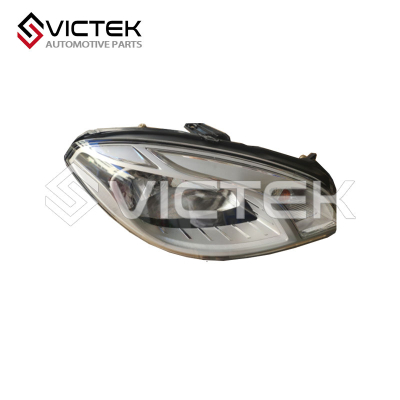Dongfeng Dignity IX5 OCV Controlling Valve (Part No.: 1021800D0300)
The OCV Controlling Valve 1021800D0300—OCV stands for Oil Control Valve—is the super precise “switch” in the Dongfeng Dignity IX5’s
VVT (Variable Valve Timing) system. It acts like a middleman between the engine’s ECU (Electronic Control Unit) and the VVT phaser (that’s the part that adjusts valve timing). This valve is made just for 2019 to 2023 Dignity IX5 models, and it fits perfectly with the car’s 1.5T turbo engine (the DK15C) and 2.0L naturally aspirated engine (the DFMB20). Both of these engines rely a lot on the VVT system to balance power and fuel efficiency—so this valve is pretty important.
Its main job is to control the pressure of the engine oil and how much of it flows to the VVT phaser. By adjusting how much oil gets to the phaser, it controls how the camshaft spins—and that fine-tunes when the intake and exhaust valves open and close. If this OCV valve isn’t working
right, the VVT system can’t adjust valve timing. That leads to slower acceleration, using more gas, and even the check engine light popping on (common fault codes here are P0011 or P0014—those are for VVT system issues). Below’s a simpler breakdown of what this part does:
This OCV valve isn’t just a basic “oil valve”—it’s basically the brain of the VVT system. It has three super important jobs that help the engine run better:
The engine’s ECU sends electrical signals to the OCV valve based on how you’re driving—like if you’re going slow, speeding up, or hauling something heavy. The valve then adjusts how much oil flows to the VVT phaser:
When you’re driving around the city (low speeds), it lowers the oil pressure. That keeps the camshaft in a “late intake” position—so the valves open later. This saves gas and cuts down on emissions.
When you’re speeding up on the highway (high speeds), it cranks up the oil pressure. That shifts the camshaft to an “early intake” position—so the valves open sooner. More air and fuel get into the cylinder, which gives the engine more power.
It has a built-in part that eases pressure—this stops sudden oil pressure spikes (which can happen when you start the car in cold weather or if the
oil pump is broken) from damaging the VVT phaser. Even if the engine’s oil pressure goes up and down, this valve keeps the oil flow smooth.
If the OCV valve notices weird oil flow—like if it’s clogged from dirty oil—it sends a signal to the ECU. The ECU then switches the VVT system to “safe mode,” where the valve timing stays fixed. This keeps the engine from getting damaged, but it still makes the check engine light turn on to warn you something’s wrong.
![1021800D0300 1021800D0300]()
Installation Position: Mounted directly on the engine’s cylinder head (look for the "OCV" label or part number engraving). The electrical connector faces outward for easy wiring, and the oil inlet port aligns with the engine’s oil passage.
Installation Steps (Must Follow!):
Oil Drainage: First, drain the engine oil (old oil may have debris that clogs the new valve). Replace the oil filter to ensure clean oil flow.
Clean the Mounting Surface: Wipe the cylinder head’s OCV mounting hole with a clean cloth—remove oil residue or metal shavings to avoid sealing leaks.
Install the Valve: Place the new OCV valve into the mounting hole, then fasten it with the factory bolt (torque: 8–10N·m). Do not over-tighten—this bends the valve body and jams the spool.
Connect Wiring & Oil Lines: Plug the electrical connector into the vehicle’s wiring harness (it’s a "one-way" connector—won’t fit backwards). Ensure the oil seal ring is properly seated to prevent leaks.
System Reset: Add new engine oil (use the grade recommended in the IX5’s manual, e.g., 5W-30 synthetic oil). Start the engine and use a diagnostic tool (e.g., Dongfeng X431) to clear any old VVT fault codes and reset the OCV valve’s adaptive data.
Regular Oil Changes: The biggest enemy of OCV valves is dirty oil—debris in old oil clogs the valve’s oil passages, jamming the spool. Change oil every 5,000–7,000km (or 6 months) with genuine Dongfeng engine oil.
Check for Leaks: Every time you change the oil, inspect the OCV valve’s oil seal ring—if it’s cracked or hardened, replace it immediately (a leaking seal reduces oil pressure to the VVT phaser).
Avoid Low Oil Levels: If the engine oil level is too low, the OCV valve can’t get enough oil to control the VVT system. Check the oil level monthly and top up if needed.
![1021800D0300 1021800D0300]()
Summary
Bottom line, the OCV Controlling Valve 1021800D0300 is the unsung hero of the Dongfeng Dignity IX5’s engine. It might be tiny, but it’s got direct control over the VVT system—basically, it’s what decides if your car has solid power or just burns through extra gas. If you change your oil regularly, and fix any issues fast, this valve’ll keep working like a charm. That way, your IX5 runs as well as it can for years on end!
![1021800D0300 1021800D0300]()
Contact us
![1021800D0300 1021800D0300]()































